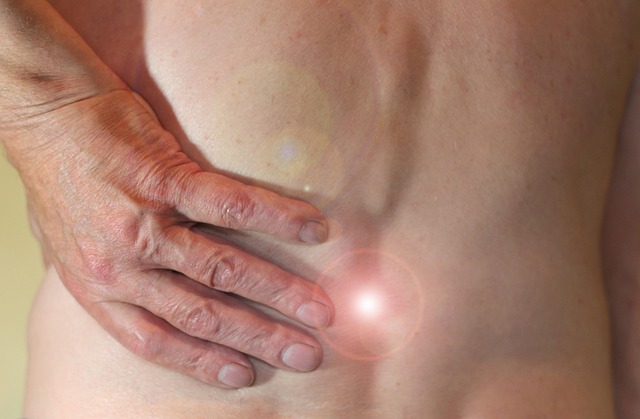Pilates for alignment is a low-impact exercise method developed by Joseph Pilates, emphasizing core strength, flexibility, and improved posture. By focusing on controlled movements and specific muscle engagement, it corrects imbalances, reduces back pain risks, and enhances overall well-being, especially beneficial for sedentary individuals. Using equipment like reformers or specialized mats, regular practice fosters healthy posture habits and reduces the risk of musculoskeletal issues. Integrated devices provide corrective feedback, enabling immediate guidance on posture in daily activities, thus preventing chronic pain and promoting long-term physical wellness. Incorporating Pilates into your routine can significantly improve spinal health, reduce back pain, and enhance stability, making it a powerful tool for cultivating good posture habits.
“Maintaining good posture is essential for overall health and well-being, yet many of us spend hours slumped over desks or screens. This article explores powerful tools and devices designed to support healthy posture habits. We’ll delve into the foundational principles of Pilates for posture alignment, showcasing its effectiveness in correcting and preventing poor posture. Additionally, we’ll uncover essential tools, innovative corrective feedback devices, and practical tips for seamlessly incorporating Pilates exercises into your daily routine.”
- Understanding Pilates for Posture Alignment
- Essential Tools to Enhance Posture
- Devices for Corrective Feedback and Monitoring
- Incorporating Pilates into Daily Routine
Understanding Pilates for Posture Alignment

Pilates is a low-impact form of exercise that focuses on strengthening core muscles and improving posture alignment. This method, developed by Joseph Pilates, emphasizes controlled movements and precise muscle engagement to create a strong yet flexible body. By targeting specific muscle groups, pilates can help correct postural imbalances, reducing the risk of back pain and enhancing overall well-being.
The practice encourages awareness of one’s body, promoting a mindful approach to movement. Through various exercises that lengthen and strengthen muscles, pilates for alignment becomes a powerful tool for maintaining good posture. This is especially beneficial for individuals spending long hours sitting or standing, as it helps counteract the negative effects of prolonged static postures, ensuring better spinal health and comfort.
Essential Tools to Enhance Posture

Maintaining good posture is essential for overall health and well-being, and there are numerous tools available to support this goal. One effective method, Pilates, offers a comprehensive approach to improving alignment and core strength. By focusing on controlled movements and engaging specific muscle groups, Pilates helps correct postural imbalances and promotes a more upright stance.
Invest in equipment like Pilates reformers or mats designed to enhance flexibility and support proper body positioning. These tools provide guidance during exercises, ensuring you maintain the right form and effectively target problem areas. Regular practice with these aids can significantly contribute to developing healthy posture habits, reducing the risk of musculoskeletal issues, and enhancing overall physical well-being.
Devices for Corrective Feedback and Monitoring

Devices for corrective feedback and monitoring play a crucial role in promoting healthy posture habits, especially when coupled with exercises like Pilates for alignment. These tools provide real-time insights into your postural stance, helping you make conscious adjustments to maintain optimal positions. Wearable sensors and applications that analyze body movement are becoming increasingly popular, offering personalized guidance to improve posture throughout the day.
By integrating these devices into daily routines, individuals can receive immediate feedback on their posture while sitting, standing, or engaging in various activities. This proactive approach allows for the early correction of bad habits, reducing the risk of musculoskeletal disorders and chronic pain associated with poor posture. With continuous monitoring, users can track their progress over time, fostering a deeper understanding of their body’s alignment needs.
Incorporating Pilates into Daily Routine

Incorporating Pilates into your daily routine can be a game-changer when it comes to enhancing posture and overall physical wellness. This low-impact exercise method focuses on core strength, flexibility, and alignment, making it an effective tool to combat the adverse effects of sedentary lifestyles. By engaging in Pilates exercises, you can target specific muscle groups that support your spine, leading to better postural habits.
Pilates for alignment involves precise movements and controlled breathing techniques. It encourages a mindful approach to exercise, helping individuals become more aware of their body positioning. Regular practice can improve spinal health, reduce back pain, and enhance overall stability. Whether it’s during a dedicated workout session or integrated into your morning routine, Pilates offers a simple yet powerful way to nurture your body and cultivate good posture habits that will benefit you in the long run.
Pilates offers a comprehensive approach to improving posture through specific exercises designed for core strength and muscular balance. By combining these techniques with modern tools and devices, individuals can efficiently monitor their progress and maintain healthy habits. Essential tools like stability balls and resistance bands enhance engagement during workouts, while feedback devices provide real-time corrections, ensuring proper form. Incorporating Pilates into daily routines not only promotes better posture but also contributes to overall physical well-being.
